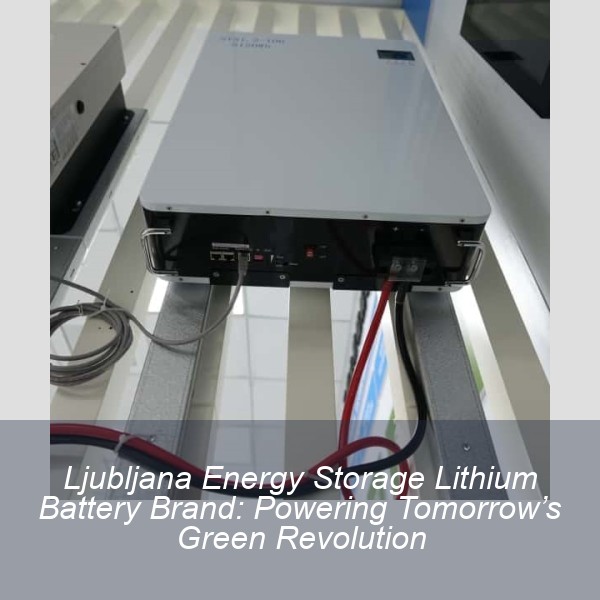Munich Solar Technology
Is Lithium Battery Energy Storage Green? Unpacking the Eco-Promise
Why You’re Probably Asking This Question (And Why It Matters)
Let’s face it—when you hear “lithium battery energy storage,” your brain might ping-pong between images of sleek Tesla Powerwalls and dystopian scenes of mining operations. But is this technology truly the environmental savior it’s cracked up to be? Spoiler: It’s complicated. Let’s break it down like a over-caffeinated chemist at a sustainability conference.
The Green Credentials: What Makes Lithium Batteries Shine
Lithium-ion batteries have become the poster child for renewable energy systems. Why? Three words: energy density. Imagine trying to power a city with AA batteries—you’d need a mountain of them. Lithium batteries? More like a hill. This efficiency makes them critical for:
- Storing solar/wind energy for cloudy/windless days
- Reducing reliance on fossil-fuel peaker plants
- Enabling electric vehicles (EVs) to actually go places
Fun fact: The Hornsdale Power Reserve in Australia—a.k.a. the “Tesla Big Battery”—saved consumers $116 million in grid costs during its first two years. Not too shabby for a bunch of oversized power banks.
The Dirty Little Secret: Mining and Manufacturing
Here’s where the plot thickens. Producing lithium batteries isn’t exactly a walk in the organic hemp farm. Extracting lithium often involves:
- Pumping brinewater in salt flats (think: South America’s Lithium Triangle)
- High water consumption—up to 500,000 gallons per ton of lithium
- Cobalt mining with questionable labor practices
But wait—it’s not all doom and gloom. Companies like Redwood Materials are pioneering battery recycling, recovering >95% of critical metals. Think of it as a circular economy version of regifting, but actually useful.
Carbon Math: The Lifetime Emissions Equation
Let’s crunch numbers. A 2022 MIT study found that lithium battery energy storage systems have 30-50% lower lifetime emissions than natural gas peaker plants. The catch? This assumes:
- Clean energy powers the manufacturing
- Batteries last 10+ years
- Recycling infrastructure exists (looking at you, EU Battery Directive)
Case in point: California’s Moss Landing Energy Storage Facility—the world’s largest battery installation—displaces enough fossil fuel use annually to equal removing 100,000 cars from roads. Not bad for something that looks like a server farm’s nerdy cousin.
The Innovation Frontier: Solid-State and Sodium-Ion
While lithium dominates today, the tech horizon sizzles with alternatives:
- Solid-state batteries: Higher safety, no liquid electrolytes (bye-bye, fire risks)
- Sodium-ion: Uses abundant salt—yes, the same stuff on your fries
- Iron-air batteries: Literally rusts to store energy (poetic, right?)
Startup Form Energy claims their iron-air batteries can provide 100-hour storage at 1/10th lithium’s cost. If that’s not a mic drop moment, what is?
When Green Gets Greener: The Recycling Revolution
Remember when phone batteries died after 18 months? Today’s EV batteries often retain 70-80% capacity after a decade. Second-life applications are booming:
- Old EV batteries powering streetlights in Tokyo
- Repurposed packs storing solar energy in Arizona
- BMW using retired batteries as forklift power sources
Recycling rates? Still lagging at <5% globally. But with the EU mandating 70% recycling by 2030, we might finally solve the “Where do dead batteries go?” riddle.
The Verdict (Without Actually Concluding)
So—is lithium battery energy storage green? It’s like asking if coffee is healthy. In moderation, with ethical sourcing and proper disposal? Absolutely. If we chug it recklessly while strip-mining Colombia? Not so much. The tech itself isn’t inherently dirty—it’s how we mine, make, and manage it that tilts the scales.
As industry insiders quip: “Lithium batteries aren’t the endgame—they’re the training wheels for a renewable future.” Now if you’ll excuse me, I need to go hug a tree… powered by a solar-charged battery, naturally.

- Pre: Bandar Seri Begawan Air Energy Storage Project: Powering Brunei’s Green Future
- Next: Photovoltaic Offline Energy Storage: Powering Your World Without the Grid
Related Contents

Ljubljana Energy Storage Lithium Battery Brand: Powering Tomorrow’s Green Revolution
If you’ve ever wondered which lithium battery brand is making waves in Europe’s renewable energy scene, let’s cut to the chase: Ljubljana Energy Storage is stealing the spotlight. Known for blending innovation with sustainability, this Slovenian gem is redefining how we store energy. But what makes their batteries the go-to choice for eco-conscious businesses and tech enthusiasts? Buckle up—we’re diving in.
